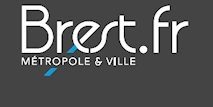
Located in the centre of Brest, the museum of fine arts is marked by a turbulent history.
The former museum first opened its doors in 1877. Housed in the corn exchange, it exhibited fifty paintings and sixty-five drawings, as well as a collection of fifteen thousand medals, coins and objets d’art. Many visitors came to see the collection on Sundays. With the goal of being as encyclopaedic as possible, the collections were made up of donations from local maritime painters such as Léopold Le Guen, Auguste Mayer and Pierre-Julien Gilbert, purchases from local artists and works provided by the State. Objects from the Far East, Africa and Oceania bear witness to a taste for the exotic made fashionable by the enormous Universal Exhibitions.
In 1941, the building and most of the works were destroyed in the fire that followed the bombardments of the city of Brest. The evacuation of many rolled canvasses had in fact been planned for the following week. Only the collections safely transferred to the Château de Penmarc’h at the end of 1939 were saved: Chinese and Japanese objects, the Greek and Etruscan collections, porcelain from Sèvres and a small number of paintings and drawings.

After the war, a new museum was planned around the original hub, to which was added a donation of ethnographic objects by the city of Glasgow and a collection of model ships of the French coasts. In 1952, construction of the museum was envisaged in the last phase of the reconstruction project by the architect Charles Mathon. The new museum was finally built close to its former site in the “Carré des Arts”, beside the Study Library, the Conservatoire and the School of Fine Arts.
From 1959, the museum began to turn in an ethnographic direction, notably through its collection of bagpipes. The museum in its final form was opened in 1968, after the rebuilding – thanks to an injection of war damage funds – of a collection focussing on the fine arts, and in particular on painting. In 1974, an exhibition held at the Louvre entitled ‘La renaissance du musée de Brest’ underlined the wealth and originality of this new collection.
Since then, the museum has acquired wide renown in the museum and art world, as is clearly demonstrated by the numerous requests for loans both from France and abroad.
Furthermore, the museum regularly holds temporary exhibitions, enabling visitors to see the collection through new eyes, to develop one of its strong points, or to open the museum up to more contemporary art.
